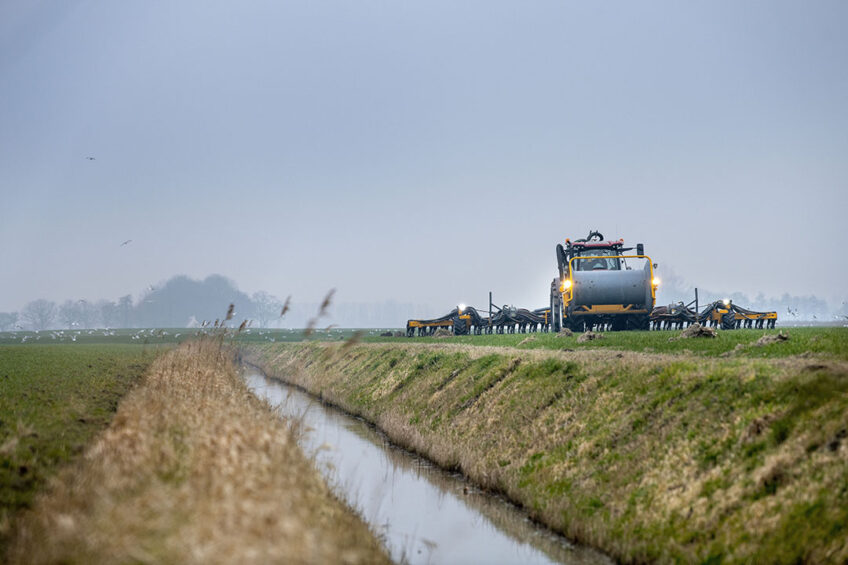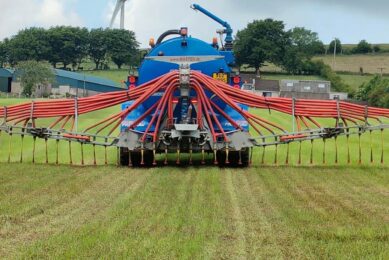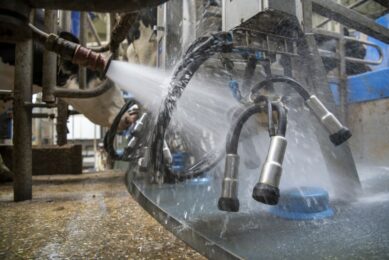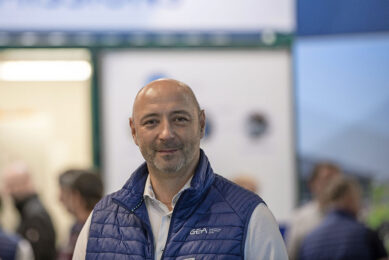A look at 3 manure management systems in dairy

Dairy production intensification has various economic benefits for rural communities; however, it has negative environmental and public health impacts due to ineffective manure management. This article will consider 3 manure management systems in the dairy industry.
 Solid waste systems
Solid waste systems
Excreted dairy manure comprises approximately 88% water. Generally, manure with 75-80% water content is handled as a solid. In the solid waste system, the liquids of manure need to be drained off by adding 5.44kg (12lb) of straw per 45.36kg (100lb) of fresh manure to allow handling dairy manure as a solid. Semisolid manure is scraped mechanically by alley or by tractor scrapers or gutter scrapers pulled by cables or chains into a holding area where liquids drain off. Solid waste systems require a 60-day minimum storage capacity due to limited available fields. In addition, the storage zone requires an all-weather access with a roof to reduce the need for collecting and storing water. Furthermore, the draining liquid needs to be diverted from the storage area to a soil-plant filter, lagoon or holding pond.
 Slurry waste systems
Slurry waste systems
Manure containing 90-96% water has the consistency of a malt which is handled as a fluid, and this process may need special pumps. The slurry system reduces dilution because it is not cost effective to transport extra water with manure using tank wagons. Earthen basins, below-ground and above-ground concrete tanks and lined and unlined metal tanks, can be used to store slurry manure for a 120-day minimum storage capacity. Slurry manure can be gravity drained or scraped into the below-ground storage structure, thus reducing equipment investment and maintenance costs. However, above-ground tanks require scraping into a collection pit and high-capacity chopper pumps to move the manure into tanks and from tanks into tank wagons, and to mix solids and liquids. Tractor-drawn tank wagons with capacities from 3,785 to 11,356 litres (1,000 to 3,000 gallons) can either spread the liquid on the soil or inject the manure into the soil, which decreases odours and nitrogen emissions.
 Lagoon waste systems
Lagoon waste systems
Lagoon waste systems handle manure with 96-98% water content with no excessive straw or fibrous material using ordinary pumps and flushing equipment. Conventional pumps irrigate lagoons, prevent surface debris interference and reduce the handling of sludge. In this system, flushing is the preferred method of manure collection and transportation because it eliminates the labour required for scraping and moving manure to storage. In addition, lagoons provide a source of flush water and storage at a relatively low cost and usually do not cause intolerable odour problems when carefully located. Moreover, fibrous material such as free-stall bedding, wasted hay, and silage need to be separated from the manure flow going to the lagoon to avoid a build up of surface crust to decrease the rate of sludge accumulation in the lagoon and to improve long-term effectiveness of the lagoon waste system. Lagoon waste systems have a 365-day storage capacity and are usually formed by excavation and above-ground berms to divert surface runoff water from the lagoon. Gated pipes are used as a surface irrigation system to pump small lagoons, but commercial gated pipes with adjustable gates are used to pump larger lagoons. The sprinkler irrigation systems are used for irregular rolling land, and stationary hand-carried systems are applied to small operations. In addition, moving sprinkler systems can be used to decrease labour and costs and to accommodate larger operations.
Conclusion
Proper manure management systems are essential to ameliorate the negative environmental and public health impacts of intensive dairy production systems. Solid waste systems are used to handle manure with 75-80% water content, slurry waste systems are applied for manure containing 90-96% water and lagoon waste systems handle manure with 96-98% water content with no excessive straw or fibrous materials. It is important to use proper tools and methods for capture, collection, transportation, storage, handling, treatment, application and utilisation of dairy cattle manure to improve the sustainability of the dairy industry.










